Birds in the corvid family are bold, beautiful and brainy. From jays to ravens, find out where these birds live—and just how intelligent they are.
Meet the Corvids

Caw, caw! Jaaay, jaaay! Even if you’re not sure what a corvid is, you’ve almost certainly heard one. Birds in the Corvidae family aren’t bashful. They’re loud and proud, and they have the brains to back up their confidence. Seventeen corvid species call North America home, most of them being jays, crows or ravens.
At least one corvid bird species is present in nearly every corner of the U.S., using its hefty brain power to trick unsuspecting humans, play pranks on other birds and even to hold funerals for fallen flock members. “A lot of field observations and lab work show their ability to solve various problems and remember past events for long periods of time,” says John Marzluff, professor of wildlife science at the University of Washington. Here’s what you should know about these super-smart birds.
Jays
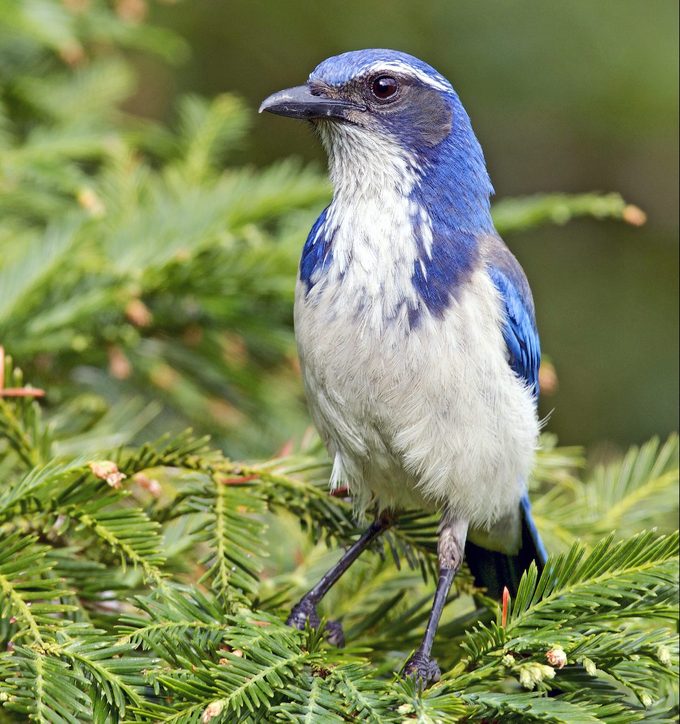
Inquisitive and boisterous, jays are a staple in many North American yards. Birders may spot blue jays, Steller’s jays or one of the three most common types of scrub-jays: Woodhouse’s, California or Florida. The jays call a variety of habitats home, from evergreen forests to suburban yards and shrublands, and are known for their loud and varying vocalizations.
John, who has studied corvids for 40 years, explains that blue jays’ food-storing behaviors help disperse oak acorns. “That relationship is maybe one of the reasons oaks and bird-dispersed plants produce so much seed,” he says. “Some of it gets eaten, but some of it doesn’t. It’s like having a little farmer work for you.”
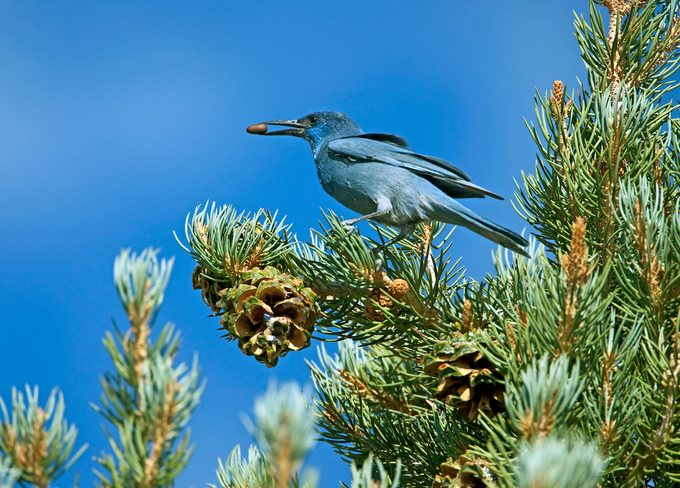
Besides their ability to spread seeds, jays are known for being mischievous. California scrub-jays, for example, steal acorns from acorn woodpecker caches and from other scrub-jays. Steller’s and Canada jays will swoop in to snatch food from unsuspecting campers, and blue jays imitate the calls of red-shouldered hawks to trick other birds into thinking a predator is near.
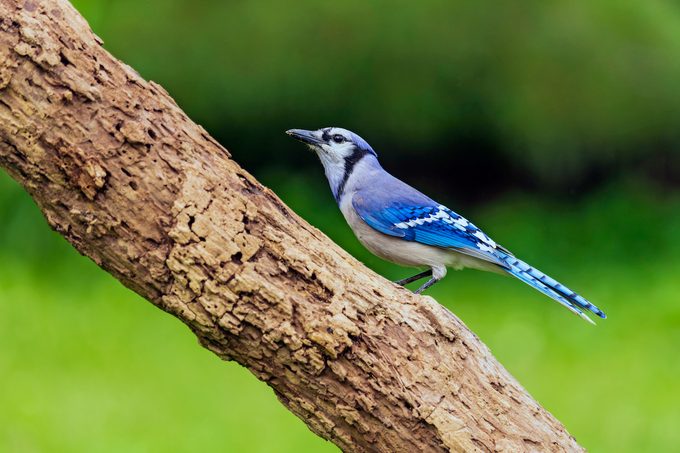
While most corvid populations are stable compared to other birds, John notes that pinyon jays are in decline. “Because we’ve reduced their habitat so much, their number has decreased,” he says. A petition was submitted in 2022 for the species to receive protection under the Endangered Species Act.
Get to know the green jay—a gorgeous tropical wonder.
American Crow and Fish Crow

The caw-caw call of the American crow rings throughout much of the United States. Crows are almost impossible to miss, given their large size and uniformly black feathers. They’re usually found in open areas with a handful of trees, which has made them a common sight everywhere from suburban yards to city parks. Learn where you can find a fish crow.
They aren’t picky about their diet, eating a wide variety of foods from seeds to carrion. Like the jays, crows have a large range of noises in their repertoire. They make more than 20 distinct-sounding calls, including gurgles, rattles and croaks.

Socially oriented, crows tend to stick together. During breeding season, the (very cute) young crows from a previous year’s brood often remain with their parents and help raise the next batch of fledglings. In winter, crows gather in large numbers, sometimes in the hundreds or thousands, to roost.
Scientists have proved that crows remember the faces of humans who have threatened them or their nests. Furthermore, crows hold “funerals” for other crows that have been killed, although this behavior might be less a mourning ritual and more a warning to other crows to stay away from a dangerous area.
If you see crows chasing after a hawk, this is why.
Common Raven
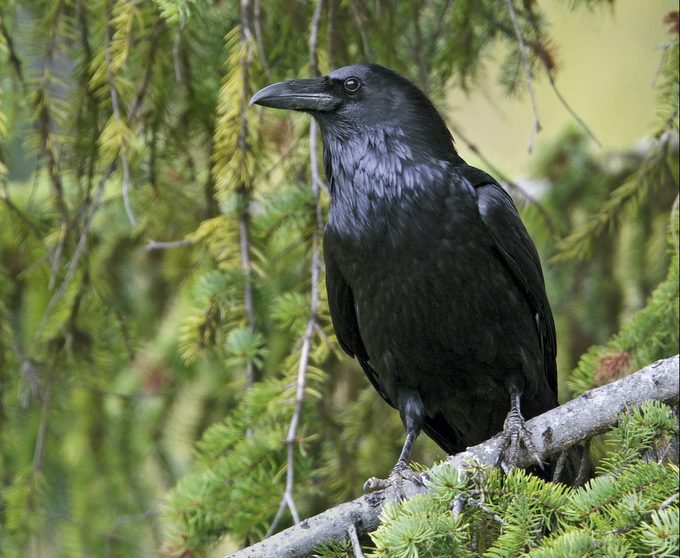
Frequently mistaken for crows because of their visual similarities, common ravens are also plenty smart. A recent study confirmed their ability to use tools to retrieve food. But they know how to have fun too—even sometimes doing midair rolls. Ravens are generally found in the western U.S. and in most of Canada and Alaska, as well as parts of New England, the Appalachians and the Upper Midwest. Check for a pointed tail and shaggy feathers on the throat to tell them apart from crows.
John mentions that ravens have captured our imaginations in many ways. “Ravens have been so powerful in our beliefs, legends, customs and language over the millennia,” he says. “They’ve greatly influenced our evolution as humans. They play a central role in so many of our stories and beliefs about how the world came to be.”
Do crow sightings have meaning?
Black-Billed Magpie
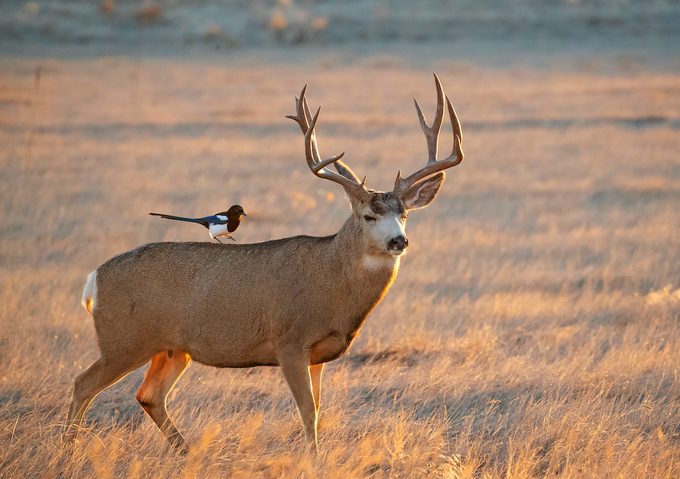
John points out that black-billed magpies have a very good sense of smell and are agile, which comes in handy as they search for their next meals. They’re often near carrion, swooping in to snag the spoils. “They scavenge equally well from cougars and wolves,” John says. Their diet includes everything from dung beetles to fruits, and they will sometimes perch on deer, moose or other large mammals to snack on ticks.
Magpies are familiar sights in the West and parts of the Midwest, where they’re spotted in wide-open areas. To identify them, look for a black, crow-sized bird with white patches on its sides. In the right light, its wings shimmer blue-green.
Is this white bird an albino crow?
How to Attract More Corvids
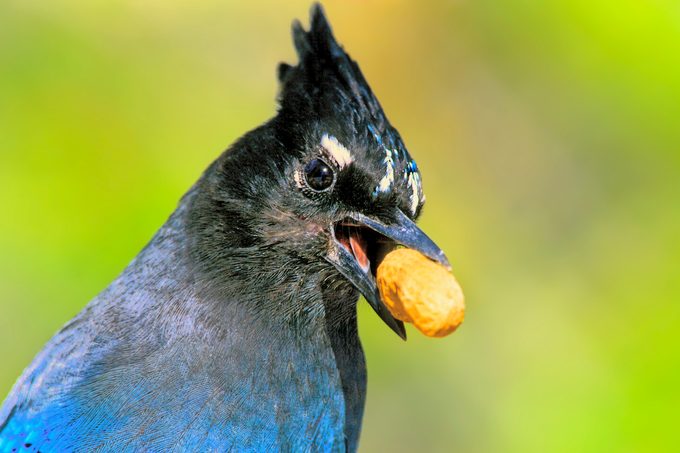
Offer these foods to your neighborhood corvid birds:
- Cracked corn
- Fruits and berries
- Suet
- Sunflower seeds or safflower seeds
- Unsalted, unshelled peanuts
Corvid fans will love these cute crow gifts.
source: https://www.birdsandblooms.com/







